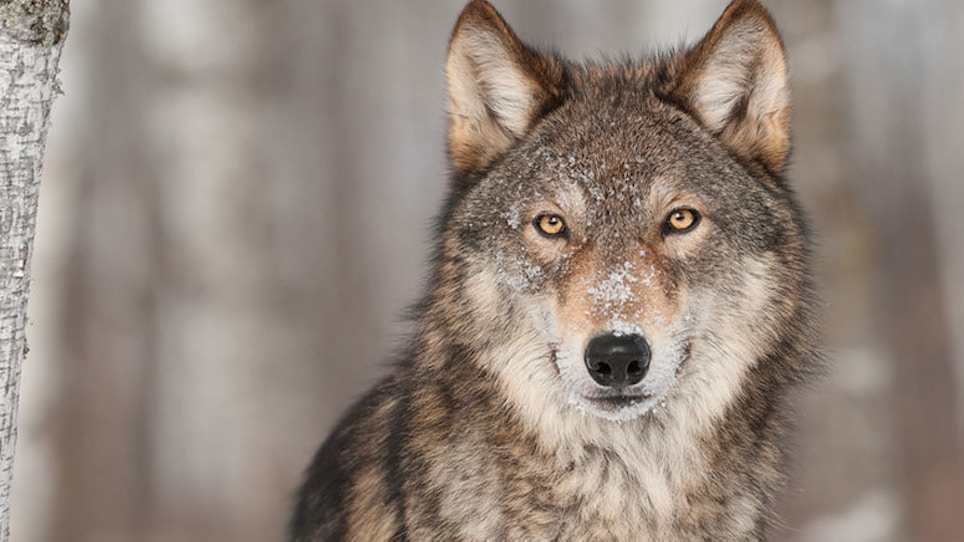One of the biggest disappointments in my outdoor career was when I moved to Elk City, Idaho, several years ago and ran head-on into the reality and results of the northern Rockies wolf reintroduction.
Elk City is a small isolated community adjacent to the Lolo and Selway wilderness areas, both of which have a long history of some of the best trophy elk hunting in the U.S. Two years in a row I spent in an outfitter’s fall elk camp baiting and guiding bear hunters. In doing so, I covered hundreds of miles of back roads, 4-wheeler and horse trails by 4x4 and 4-wheeler, in the heart of what was once phenomenal, elk country. Never once did I see a bull elk or hear an elk bugle.
Unbelievable! So was the amount of wolf sound and sign throughout the area.
That would never have been the case in Colorado where I lived and worked as a conservation officer and big game outfitter for over 45 years. Yet today, many of the same liberal ignoramuses who got trapping and spring bear hunting outlawed are trying to create the same “predator pit” situation in Colorado by reintroducing wolves into the Colorado Rockies.
The Rocky Mountain Wolf Project, funded in part by preservationist Ted Turner and the TIDES organization, are pushing to get the needed 124,000 signatures to get this issue on the election ballot. Their present goal is to reintroduce 250 wolves into four areas of the western Colorado Rockies.
Studies show that wolves kill an average of 100 big game animals and livestock per wolf each year. This devastating depredation would remove roughly 25,000 big game and domestic animals from the population yearly just to start with. Yet proponents of this disaster state emphatically a Colorado wolf reintroduction would have little or no impact and be good for the overall balance of big game herds in the state. Hogwash!
Idaho’s once thriving elk, moose and deer herds in many areas of the state are on a downtrend. According to several game and fish personnel and locals who have spent their life in the area, it’s an unrecoverable decline. This is a phenomenon known as a “predator pit,” when predators kill enough of a prey species that the prey animals can’t produce enough offspring to maintain the population.
Moose are the prey of choice for wolves when available, and are a prime example of what can happen when wolves were turned loose in Idaho in 1995 and proliferated far beyond the supposedly all-knowing biologist’s predictions. During the 2000 hunting season, 60 moose tags were issued in the hunting unit around Elk City and hunters harvested 46 bulls. By 2011, only eight tags were issued and a single bull was killed. The season was closed completely in 2012 and remains closed. In the time I spent roaming around Elk City, I never saw a single moose.
The Idaho wolf situation is abysmal to say the least, but relocating wolves into the Colorado Rockies would be even more disastrous as the mountains and the big game situation are even less adaptable to these four-legged killers. Colorado is slightly larger than Idaho, and has a population of 5.7 million, or 52 people per square mile. Idaho has only 1 million residents, or 20 people per sqare mile. The wolf inundated state of Montana supports just over 1 million inhabitants at seven individuals per square mile, followed by Wyoming with 577,737 people equating to six per square mile. There are more people, more pets and livestock, and far less open, unpopulated wolf habitat in Colorado than the other wolf-troubled states.
Much of the supposedly ideal Colorado wolf habitat touted by these idealistic but misinformed animal activists is high, rugged mountains. It’s country that is great wildlife habitat during part of the year, and uninhabitable by everything but picas, ptarmigan, snowshoe rabbits and snow fleas during the winter months — not exactly wolf-sustaining fare.
When Colorado’s big game is forced to migrate to lower winter ranges, they will become even more accessible to wolves, as will the domestic livestock and pets living on the private ranches that constitute much of Colorado’s big game’s wintering area. This annual migration doesn’t stop at the borders of New Mexico, Utah and several Indian reservations. Neither will the wolves. These are lands where a major portion of income is derived from big game hunting and raising livestock. It’s not exactly a no-impact situation.
Stop the Wolf — www.stopthewolf.org — is the main coalition fighting tooth and nail to keep this travesty from happening. Many different groups are seeing the possible consequences of such a debacle and are joining the fight to keep wolves out of the Colorado mountains.
The end result of this endeavor may boil down to who has the most money to spend, and not on common sense coupled with proven game and predator management facts.







